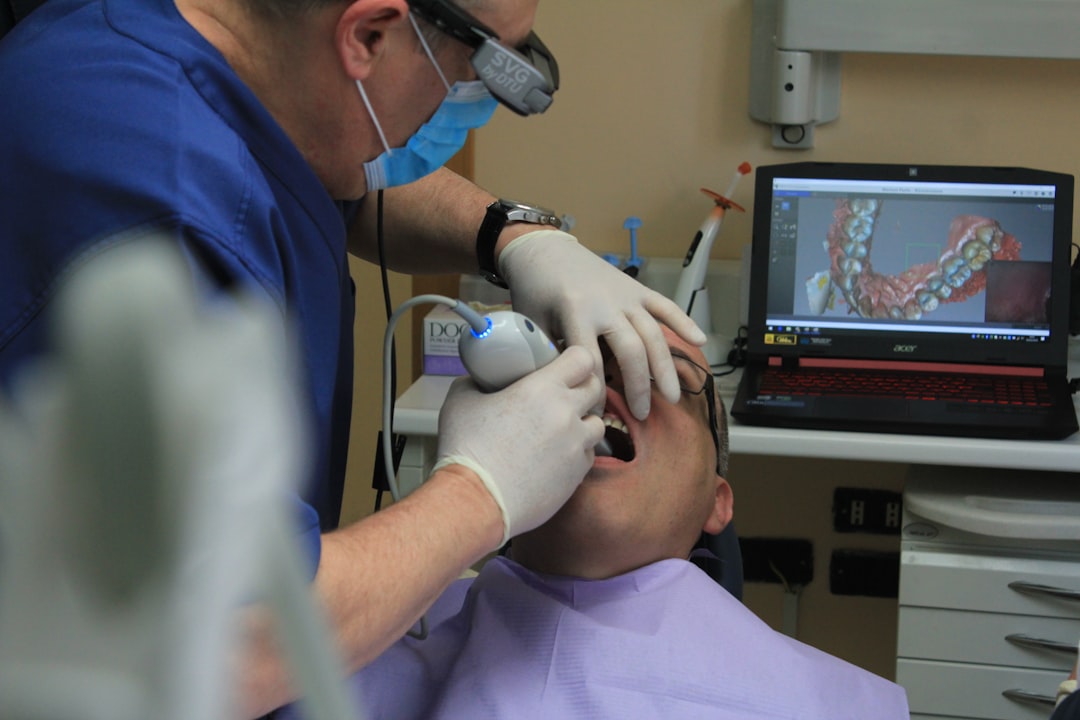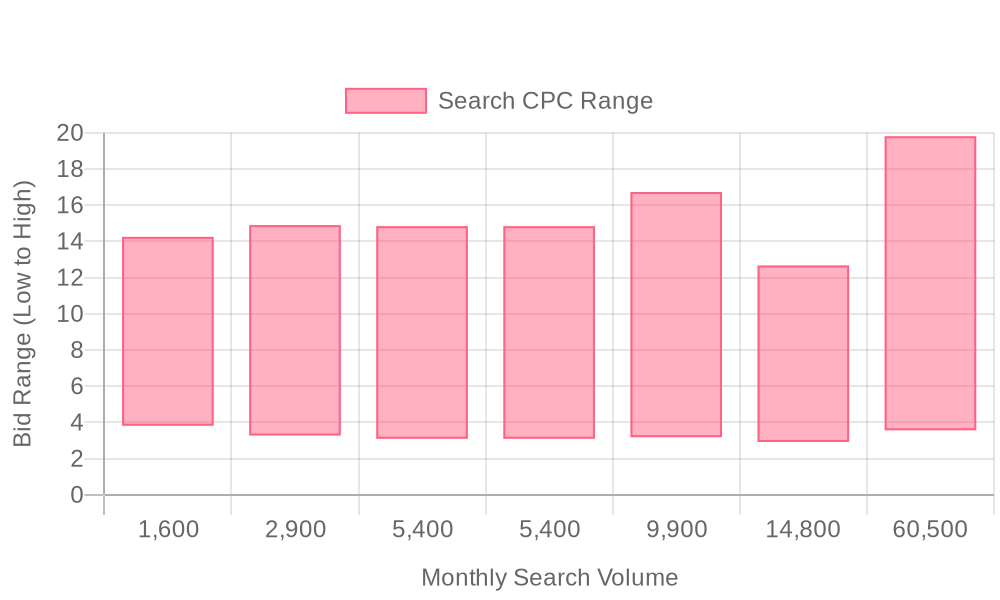
Supercharge your lead generation with a FREE Google Ads audit - no strings attached! See how you can generate more and higher quality leads
Get My Free Google Ads AuditFree consultation

No commitment
Supercharge your lead generation with a FREE Google Ads audit - no strings attached! See how you can generate more and higher quality leads
Get My Free Google Ads AuditFree consultation

No commitment
In today's competitive educational landscape, leveraging Google Ads for promoting dental assistant training programs is increasingly essential for reaching prospective students effectively. With a multitude of options available online, the challenge lies in capturing genuine interest while minimizing budget waste. As digital platforms become primary research tools, targeting potential learners at the critical moment of decision-making becomes paramount. Modern solutions now allow training programs to pinpoint these moments more effectively. Whether following up after a career fair, securing visibility in specific localities, or optimizing cost-effectiveness from clicks to applications, Google Ads provides robust methods to engage potential students when it matters the most.

Many dental assistant training programs struggle to connect with qualified prospects who conduct extensive research online but never fill out inquiry forms. Modern marketers can now leverage advanced behavioral insights to identify these high-intent visitors before their competitors, ensuring no interested candidate goes unnoticed.
A data-driven approach to campaign planning is essential. By integrating granular audience segmentation and keyword strategies tailored to aspiring dental assistants, marketing teams improve precision and maximize relevancy. For a deeper dive into how technical schools structure their PPC campaigns, Technical School PPC Playbook provides a detailed analysis.
Engagement starts with compelling landing pages and purposeful ad creatives. The most effective training programs focus on clear calls to action and tangible outcomes—such as certification, externships, or job placement—using messaging proven to resonate with career-focused learners. This builds on the strategies outlined in the Retargeting Guide.
Performance optimization is an ongoing discipline. Real-time analytics allow teams to monitor which keywords, audiences, and creatives are driving applications and which need adjustment. By dynamically adjusting bids and creative based on live market signals and behavior tracking, marketers can consistently improve ROI and reduce wasted spend.
A cross-channel strategy rounds out the most successful dental assistant program campaigns. Prospective students often interact with multiple touchpoints—search, display, remarketing, and even offline channels—before enrolling. Platforms like Sona Attribution are designed to unify intent signals and engagement data across platforms, helping marketers map the full student journey and ensure no opportunity for conversion is lost.

Dental assistant training programs face unique marketing challenges, with audiences ranging from recent high school graduates to career-changing adults. Precision targeting through Google Ads enables these institutions to reach specific demographics and interest groups, ensuring every advertising dollar is directed at prospects most likely to enroll. Industry-specific tactics are explored in Google Ads for Schools, providing a closer look at best practices for schools.
High-intent searches signal a readiness to invest in dental education, and Google Ads bridges the gap between discovery and application by placing training programs in front of candidates at the moment of decision. Campaigns can be adjusted instantly, responding to enrollment surges or seasonal shifts, keeping marketing agile and cost-efficient.
Location-based targeting expands reach into emerging or underserved regions, allowing programs to attract new cohorts while avoiding wasted impressions in non-relevant markets. For more insights on optimizing your advertising return, check out our guide on Google Ads ROI.
Integrating Google Ads data into unified analytics platforms unlocks deeper insights, empowering marketing teams to make informed, data-driven decisions that optimize campaigns across channels and maximize enrollment ROI. By connecting ad engagement to downstream CRM and enrollment data, marketers gain a holistic view of what drives applications, enabling smarter budget allocation and streamlined student acquisition.

Revenue teams in dental assistant training programs can accelerate growth by refining their targeting around vertical keywords that reflect specialized certifications and hands-on skills. Focused keyword strategies, such as “accelerated dental assistant certification” or “online dental radiology training,” allow you to align ad copy and landing pages with the precise needs of high-value prospects. Google Ads for Dentists provides a deeper look at successful approaches for healthcare education.
A robust competitor gap analysis is essential for uncovering student segments that may be underserved by traditional advertising. By examining the messaging and targeting strategies of peer institutions, you can detect audience gaps, such as working adults seeking flexible schedules or bilingual candidates interested in industry credentials. These insights make it possible to craft campaigns that differentiate your offering, drawing attention from prospective students who haven’t been reached by mainstream channels.
Placing ads within niche industry forums and directories provides unique visibility where organic SEO may have limited reach. Dental-specific education boards, association websites, and local healthcare job boards are frequented by aspiring dental assistants who trust these sources for career advancement. Directly advertising in these environments can yield highly qualified traffic, while tools like Sona ID help marketers pinpoint which organizations or individuals are engaging, so sales teams can prioritize outreach with real-time context.
Retargeting strategies are especially effective when combined with educational content tailored to dental training. Use sequential ad messaging to re-engage site visitors who explored curriculum pages, downloaded informational brochures, or started an application but did not convert. For more insights on nurturing prospects throughout the funnel, check out our guide on Buyer Journey. Integration with CRM and ad platforms streamlines this process, ensuring your campaigns stay synchronized with the latest lead data.

Audience segmentation for dental assistant programs enables marketing teams to prioritize resources and messaging for the highest-value student prospects. By leveraging granular data, recruitment campaigns become more relevant, driving better engagement and improved application rates.

| Industry | Keyword | Monthly Search Volume | Competition Level | Low Bid | High Bid |
| Dental Assistant Training Programs | dental assistant training programs | 1600 | LOW | 3.82 | 14.25 |
| Dental Assistant Training Programs | dental assistant online course | 2900 | LOW | 3.28 | 14.9 |
| Dental Assistant Training Programs | dental assistant course | 5400 | LOW | 3.1 | 14.84 |
| Dental Assistant Training Programs | dental assistant classes | 5400 | LOW | 3.1 | 14.84 |
| Dental Assistant Training Programs | dental assistant school near me | 9900 | MEDIUM | 3.19 | 16.73 |
| Dental Assistant Training Programs | dental assistant certification | 14800 | MEDIUM | 2.92 | 12.67 |
| Dental Assistant Training Programs | dental assistant school | 60500 | MEDIUM | 3.57 | 19.81 |
Precision in keyword targeting is the foundation for successful google ads for dental assistant training programs. Modern revenue teams leverage advanced analytics to uncover high-intent search terms that prospective students actively use when researching dental assistant certification, professional upskilling, or fast-track healthcare careers. This approach ensures ad spend is directed toward audiences already demonstrating genuine interest in accredited dental assistant programs, maximizing the impact of every impression and click.
A robust keyword strategy blends broad and niche queries, capturing both top-of-funnel explorers and bottom-of-funnel applicants ready to enroll. Marketers benefit from dynamic keyword lists that adapt as trends shift, such as increasing demand for "online dental assistant certification," "dental assistant training near me," or "evening dental assistant classes." Google Ads for Education provides a deeper look at this trend.
Negative keyword strategies are essential for reducing wasted spend and improving lead quality. Filtering out terms related to "DIY dental care," "dental assistant job openings," or unrelated dental sales ensures campaigns only attract candidates with training and certification intent. As discussed in our Retargeting Guide, syncing enriched intent data and CRM insights into advertising workflows helps refine targeting, exclude irrelevant segments, and dynamically suppress unqualified traffic. This seamless coordination between keyword management and audience intelligence helps drive consistent, measurable ROI for dental assistant program promotion.
A successful campaign for dental assistant training programs begins with deeply segmented keyword research. Build intensive clusters around core course offerings, such as “dental assistant program near me” or “certified dental assistant classes,” while layering in geographic qualifiers to capture local search demand. Incorporate long-tail and question-based queries that reflect how prospective students naturally search for education, such as “how to become a certified dental assistant in [city]” or “affordable dental assistant training with externship.”
To maximize relevance and minimize wasted spend, apply negative keyword filters that exclude irrelevant or low-converting queries. Use intent signals to refine clusters by identifying high-performing keywords tied to enrollment behaviors. Platforms like Sona Audiences help pinpoint actual companies or visitors, moving your strategy beyond anonymous search and aligning ad spend with those most likely to convert.
Compelling ad copy is the bridge between searcher intent and program enrollment. Address candidate concerns such as career advancement, job placement rates, and hands-on clinical experience, ensuring that every headline and description clearly communicates program benefits. Highlight unique selling points—like accelerated timelines, flexible scheduling, or industry-recognized certification—to stand out in a crowded market.
Use ad extensions to add depth, linking to course details, tuition support, or alumni testimonials. Google Ads guide provides a deeper look at how ad strategies can be tailored for schools and training programs. When audience insights dynamically update based on real-time engagement, your messaging can adapt to showcase the most relevant benefits to each prospect segment. This approach ensures your ad copy remains aligned with evolving audience needs and maximizes click-through and conversion rates for dental assistant marketing campaigns.
Landing pages must seamlessly align with ad messaging and keyword intent to create a frictionless user journey. Ensure every landing page reinforces the promise made in your ad, with clear calls to action such as “Apply for Dental Assistant Training” or “Request Program Info.” Incorporate testimonials and success stories that establish credibility, using real student outcomes to build trust and drive higher conversion rates.
Integrating visitor identification with robust attribution allows you to measure which audience segments engage and convert, even when leads come from offline sources. For more insights on connecting CRM data to ad performance, check out our guide on revenue attribution. Syncing enriched audience data with your CRM ensures that every inquiry is tracked from click to enrollment, providing a comprehensive view of Google Ads ROI for training programs and allowing for precise, data-driven optimization of landing content.
Ongoing optimization is critical for sustained performance in PPC for dental training. Use advanced insights to make smart bidding adjustments based on real-time enrollment data, shifting budget toward high-converting audiences and locations. Google Ads best practices shares industry benchmarks for this approach. Regularly test headlines, descriptions, and call-to-action placements, leveraging campaign analytics to guide iterative improvements that respond to changing market dynamics.
When campaign data, audience segments, and conversion events are unified across channels, you gain visibility into true performance—enabling attribution across both online and offline touchpoints. Syncing lead and audience information with ad platforms and CRMs ensures that optimizations are always based on the freshest, most complete data, empowering teams to continually refine dental assistant program promotion strategies for maximum impact. To start optimizing your campaigns with actionable data, get started.

Dental assistant training providers who scale their digital presence consistently outperform regional competitors in student acquisition and engagement. Results-driven marketing hinges on unifying data insights with agile campaign execution, ensuring each interaction supports both short-term enrollment and long-term brand authority.
Mastering Google Ads for your dental assistant training program doesn’t have to feel overwhelming—it’s about leveraging the right strategies to connect with eager learners.
By now, you’ve seen how targeted keywords, compelling ad copy, and smart bidding can transform your campaigns from overlooked to high-converting. Whether you’re aiming to boost enrollment or stand out in a competitive market, these tactics put you in control of your program’s growth.
Imagine filling your classes with motivated students who found you through ads tailored just for them. With the right approach, that vision isn’t just possible—it’s within reach.
Ready to see how effortless high-performance advertising can be? Start a free trial to experience Sona's platform and its capabilities.
Best practices include using advanced behavioral insights for targeting, data-driven campaign planning with granular audience segmentation, creating compelling landing pages, employing real-time analytics for optimization, and integrating cross-channel strategies to map the full student journey.
The budget should be aligned with targeted high-intent keywords and precise demographic targeting to ensure cost-effectiveness, but specific amounts depend on individual program goals and market conditions.
Target keywords such as 'accredited dental assistant courses,' 'dental assistant certification near me,' and long-tail queries like 'how to become a certified dental assistant in [city].'
Success can be measured using real-time analytics to track which keywords and creatives drive applications, integrating online and offline conversion data with CRM systems, and optimizing based on market signals and behavior tracking.
Common mistakes include failing to use negative keyword strategies to reduce wasted spend, not aligning landing pages with ad messaging, and neglecting the use of data-driven optimizations for ongoing performance improvements.
Join results-focused teams combining Sona Platform automation with advanced Google Ads strategies to scale lead generation

Connect your existing CRM

Free Account Enrichment

No setup fees
No commitment required

Free consultation

Get a custom Google Ads roadmap for your business
Join results-focused teams using Sona Platform automation to activate unified sales and marketing data, maximize ROI on marketing investments, and drive measurable growth

Connect your existing CRM

Free Account Enrichment

No setup fees
No commitment required

Free consultation

Get a custom Google Ads roadmap for your business
Over 500+ auto detailing businesses trust our platform to grow their revenue
Join results-focused teams using Sona Platform automation to activate unified sales and marketing data, maximize ROI on marketing investments, and drive measurable growth

Connect your existing CRM

Free Account Enrichment

No setup fees
No commitment required

Free consultation

Get a custom Google Ads roadmap for your business
Over 500+ auto detailing businesses trust our platform to grow their revenue
Join results-focused teams using Sona Platform automation to activate unified sales and marketing data, maximize ROI on marketing investments, and drive measurable growth

Connect your existing CRM

Free Account Enrichment

No setup fees
No commitment required

Free consultation

Get a custom Google Ads roadmap for your business
Over 500+ auto detailing businesses trust our platform to grow their revenue
Join results-focused teams using Sona Platform automation to activate unified sales and marketing data, maximize ROI on marketing investments, and drive measurable growth

Connect your existing CRM

Free Account Enrichment

No setup fees
No commitment required

Free consultation

Get a custom Google Ads roadmap for your business
Over 500+ auto detailing businesses trust our platform to grow their revenue
Our team of experts can implement your Google Ads campaigns, then show you how Sona helps you manage exceptional campaign performance and sales.
Schedule your FREE 15-minute strategy sessionOur team of experts can help improve your demand generation strategy, and can show you how advanced attribution and data activation can help you realize more opportunities and improve sales performance.
Schedule your FREE 30-minute strategy sessionOur team of experts can help improve your demand generation strategy, and can show you how advanced attribution and data activation can help you realize more opportunities and improve sales performance.
Schedule your FREE 30-minute strategy sessionOur team of experts can help improve your demand generation strategy, and can show you how advanced attribution and data activation can help you realize more opportunities and improve sales performance.
Schedule your FREE 30-minute strategy sessionOur team of experts can help improve your demand generation strategy, and can show you how advanced attribution and data activation can help you realize more opportunities and improve sales performance.
Schedule your FREE 30-minute strategy session





Launch campaigns that generate qualified leads in 30 days or less.
